THE HEART OF VIRTUAL WORLDS – GAMING ENGINE IN EMBODIED INTERACTION DESIGN
JAKUB WRÓBLEWSKI
Source: artist’s private gallery
Space is a capacious vessel. He ‘pours’ into it traces of various experiences. He installs objects, which stimulate our senses and virtual forms that lead to psychological transformation, which happens thanks to the dialogue between imagination and body memory. With built-in trend radar and sharpened perception, he dynamically moves through the rhizomes of mind maps. He thoroughly researches the potential of up and running gaming engines in artistic VR design. In the process, engines convert his earlier experiments on forms, which transcended the media boundaries or branched narrative paths.
Jakub Wróblewski is particularly interested in collective work – making joint decisions with other artists, combining creative visions, and integrating in the environment. These ideas are brought to life as a consequence of artistic collaboration, for example with interdisciplinary team Inexsistens, which creates immersive projects. He runs 3D & Virtual Occurrences Studio at The Academy of Fine Arts in Warsaw, where he explores new tools and technologies for embodied virtual world design.
In the English version we present selected and most interesting quotes from the interview.
GOING BEYOND THE ‘FILM FRAME’
Many virtual reality projects were created by artists associated with cinema. Looking through the ‘film frame’ has largely influenced the way of thinking about VR – it is not good for the development of this medium. The film has been around for over a hundred years and the experiences associated with it can certainly be as considerable as those of virtual reality. But when we (me, Przemek Danowski and Andrei Isakov) work with young students at 3D & Virtual Occurrences Studio, we want them to seek different sensitivity layers in order to create future digital projects.
Jakub Wróblewski, Render, Source: artist’s private gallery
MIND MAPS AND MINDSET – NOTES FROM RHIZOMES OF THOUGHTS
In the ’First We Feel Then We Fall’ project concerning James Joyce, I started cooperation with Katarzyna Bazarnik, prof. of Jagiellonian University. I was looking for someone who could help me with creating meaning, deciphering works and the whole oeuvre of James Joyce, while maintaining his characteristic stream of consciousness. For the ‘Lovestory’ project, I did a big research on porn (i.e. ‘Hard Core’ by Williams Lindy) and on ways of showing the body and its mechanics. I think that artistic research also starts from exploration and study of tools that do not lead to immediate results. In creating virtual reality experiences, in immersive and new media projects, the process usually is complicated and starts from building a good team. I think we can describe these times as ‘team’ times. It is difficult to be a new media artist on your own – I am interested in making joint decisions and working with other creators. The principles set out at the very beginning can be helpful for directing the activities and narrowing the scope of the search. On the other hand, my research also concerns creating repositories and filling them with references. Recently, I have been interested, for example, in the visual aspect of UN armoured personnel carriers, incl. ones from the former Yugoslavia, which are simply amazingly designed. They served as a breeding ground for algorithms used in machine learning and those for creating a seamless version of vehicles in the metaverse. I intentionally wanted to transfer them to the Polish border. Sometimes these researches concern only the form, or graphic elements such as grids, or even visualisation and techniques, such as airbrush drawing from the 80s or 70s.
Jakub Wróblewski, Mind Map, Lovestory, source: artist’s private gallery
Jakub Wróblewski, UN Trucks, Machine Learning, source: instagram.com/jakub.a.wroblewski
Jakub Wróblewski, UN Trucks, Machine Learning, source: instagram.com/jakub.a.wroblewski
IN THE MIRROR OF PROJECTIONS – DESIGN FOR EMBODIMENT
Some time ago, I discovered that stages of my life are somehow reflected in my projects. Moreover, I am starting to understand where some impulses of creating particular artworks came from. It is sure that activities related to ‘Bardo’ project, which was inspired by ‘The Tibetan book of Living and Dying’, were as well somewhat of an overview of my disease and its circumstances. For quite a long time I neglected my body and ‘lost contact’ with it in a way. Exploration of new technologies and VR coincided at that time with my attempts and desire to ‘take control’ over my body. I wanted to feel who I am and what I like more fully. I wanted to be in contact with my feet, my back, my ears, and not to be ‘30 meters ahead’ writing emails, ending my days away from bed, or constantly filling my head with millions of tasks popping up on my tablet or smartphone. So this coming to myself and my search for the space ‘inside’, together with breathing exercises definitely influenced my first stage of research on virtual reality.
VR makes it possible to break the boundaries of physics and the capabilities of the body. Things that are difficult or impossible to experience in the natural world are possible to do in VR. These tools allow us to take a shortcut, which can be quite an inspiration and a discovery in itself. This path is worth taking. I think that virtual reality is made for fun; I see nothing wrong with treating it like that. On the other hand, it is a powerful technological ‘combine harvester’ that can change our perception, our views on most important issues or trigger empathy. However, I would be careful with changing ways of thinking of our recipients. Definitely, for some people that have problems with self-identity, or if they are very sensitive or ill, it could be quite an intense experience. The question is should we or should not take responsibility over our recipients and those we let into our project’s VR world.
„Bardo”, source: artist’s private gallery
Another thing I worked on was testing emulation in virtual reality. You can easily get used to your virtual body, and for example, use your digital versions of hands. However, in ‘Lovestory’ we took a step forward. We wanted to make it possible for a person immersed in virtual experience to possess another body, to feel it, and to forget about what she or he leaves behind VR. To become a ‘thought form’ that can travel freely, forgetting about body carbon percentage, weak bones, vulnerable tendons, and about any other limit of ‘meat and blood’. Virtual reality is such a place where you can forget about your imperfect human body.
„Lovestory”, source: artist’s private gallery
SET AND SETTING – A SENSE OF SPACE AND VR
Visiting VR in a crowded, loud place full of strangers, which judge you, could not be the best idea. Creating the mood is pivotal for experiencing VR.
Jakub Wróblewski, Render of new works using a gaming engine, source: artist’s private gallery
Jakub Wróblewski, Render of new works using a gaming engine, source: artist’s private gallery
Jakub Wróblewski, Render of new works using a gaming engine, source: artist’s private gallery
LISTEN TO SENSOR PODCAST
Broaden your perception. Hear about how technologies are changing art, culture, society, politics and marketing. The first series of interviews presents artists of the new media. You will find on Spotify part of the interview unpublished on the website.

See also...
Konrad Zduniak

Iza Szostak

Michał Szota


Ⓒ Copyright 2022 Sensor
Website proudly created by Karolina Jaworska
Used font: Roboto
Project by Weronika M. Lewandowska under an art scholarship of the Capital City of Warsaw
